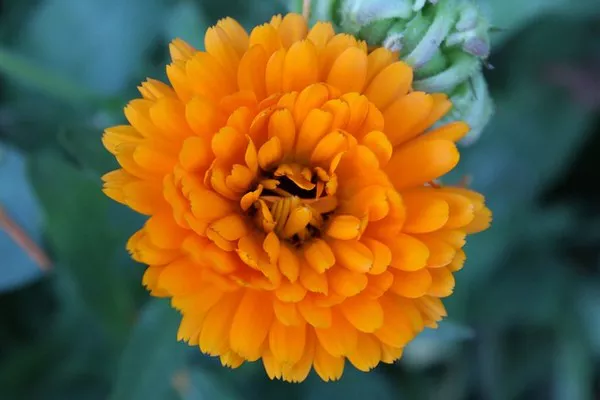The marigold flower (Tagetes), renowned for its vibrant hues and distinctive aroma, has been a staple in gardens across the globe for centuries. Beyond its ornamental appeal, this versatile flower serves various practical purposes, ranging from culinary applications to medicinal uses and cultural symbolism. In this article, we delve into the multifaceted role of the marigold flower and explore its diverse uses that extend far beyond mere aesthetics.
Culinary Uses:
While marigolds are often associated with garden beauty, they also find a place in the culinary world. The petals of certain marigold varieties, such as Tagetes erecta, commonly known as African marigold, are edible and add a unique flavor to a variety of dishes. The petals have a mildly citrusy and spicy taste, making them a popular choice for garnishing salads, soups, and desserts.
In many cultures, marigold flowers are used to infuse color and flavor into beverages like herbal teas and cocktails. Their vibrant orange and yellow hues make them an attractive addition to both sweet and savory dishes. Chefs and home cooks alike appreciate marigold petals not just for their visual appeal but also for the subtle depth of flavor they bring to the table.
Medicinal Properties:
Beyond the kitchen, marigold flowers have long been recognized for their medicinal properties. The most widely known medicinal marigold species is Calendula officinalis, commonly referred to as pot marigold. Calendula possesses anti-inflammatory, antifungal, and antibacterial properties, making it a valuable ingredient in herbal medicine.
Calendula extracts are often used topically to promote wound healing and alleviate skin conditions such as eczema and dermatitis. The flower’s natural antiseptic properties make it an excellent addition to skincare products, including creams, ointments, and salves.
Moreover, marigold flowers have been employed in traditional medicine to address various internal health concerns. Infusions made from marigold petals are believed to have benefits for digestive health and can be used to alleviate issues like indigestion and gastritis. The flower’s antioxidant content is thought to contribute to its overall health-promoting effects.
Cultural and Symbolic Significance:
Marigolds hold significant cultural and symbolic importance in various societies around the world. In many Indian festivals, marigold flowers are a symbol of prosperity and are extensively used in decorations. Strings of marigold garlands adorn homes and temples during celebrations, creating a vibrant and auspicious atmosphere.
In Mexican culture, marigolds are closely associated with the Day of the Dead (Dia de los Muertos) festivities. During this annual event, marigold petals are scattered on altars and graves to honor and remember deceased loved ones. The bright colors of the flowers are believed to represent the sun and guide the spirits back to the world of the living.
Additionally, marigolds have been historically linked to ancient rituals and ceremonies. In Greek and Roman cultures, these flowers were dedicated to the gods and goddesses, symbolizing purity and protection. Over time, marigolds have become ingrained in various cultural practices, serving as a common thread that weaves through diverse traditions.
See also A Guide to Cat-Friendly Spring Flowers
Conclusion:
The marigold flower’s journey from the garden to the kitchen, medicine cabinet, and cultural celebrations is a testament to its versatility and significance. Beyond its role as a mere ornamental plant, marigolds have proven themselves to be valuable in various aspects of human life. Whether adorning a festive altar, enhancing the flavor of a culinary creation, or providing relief through natural medicine, the marigold flower continues to captivate and contribute to the richness of our global heritage. As we continue to explore the depths of nature’s bounty, the marigold stands as a colorful reminder of the interconnectedness between beauty, functionality, and cultural symbolism.


